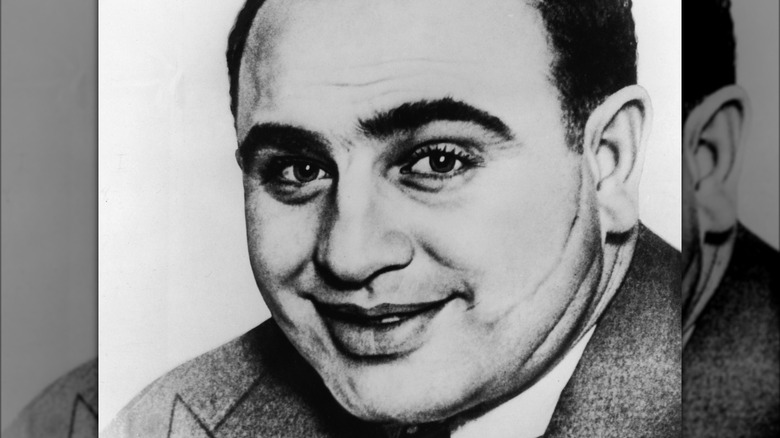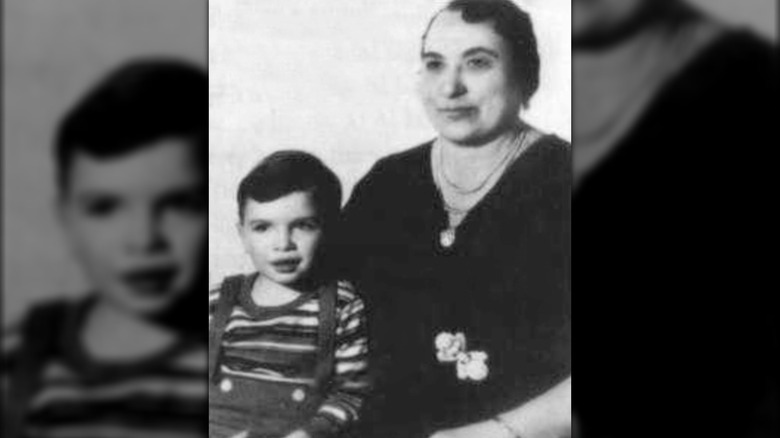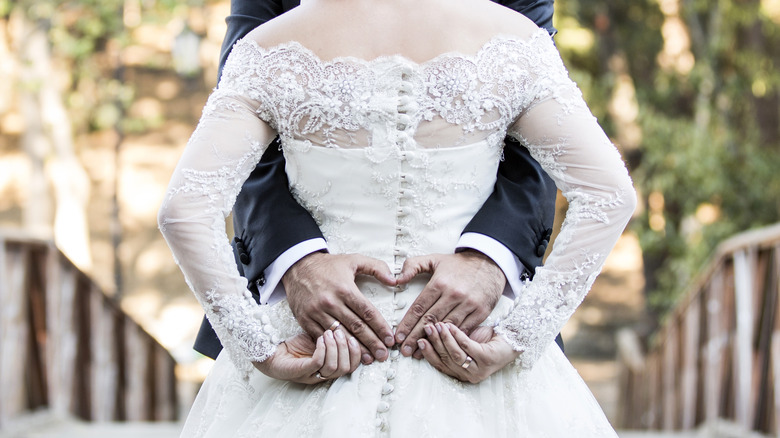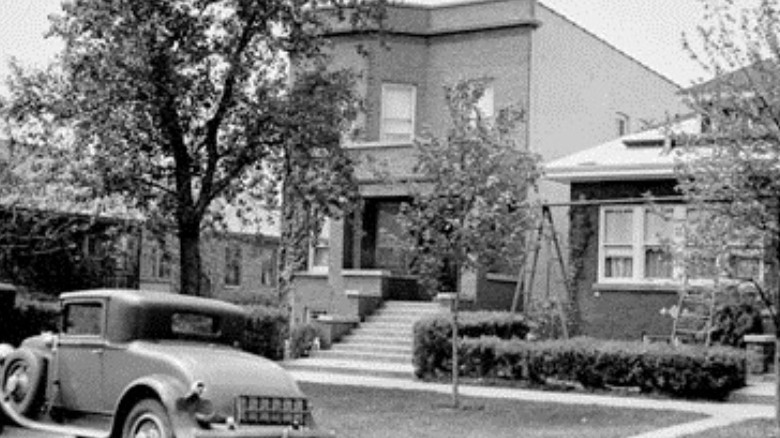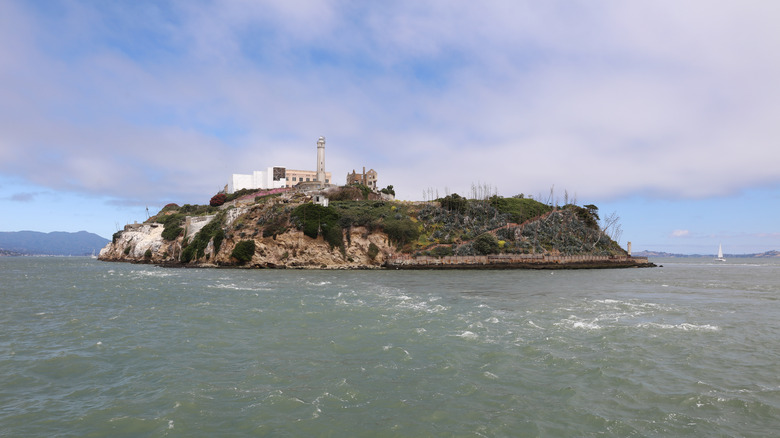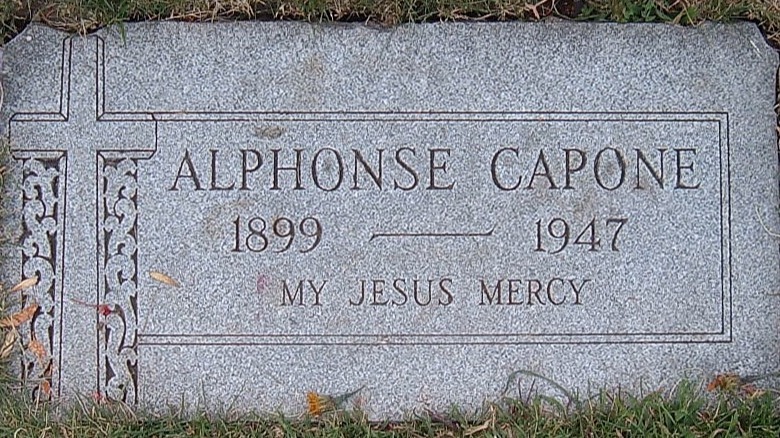What Do We Know About Al Capone's Wife, Mae Capone?
Mary Coughlin, a green-eyed blond of Irish extraction, caught the eye of Alphonse Gabriel Capone, who was smitten the moment he saw her at the small social club in Brooklyn, New York. He was 18, and she was two years older, and though they came from two different worlds, they fell in love, according to "Al Capone: His Life, Legacy, and Legend."
Capone already had the scars running down the left side of his face that would give him his infamous nickname. It had happened that summer when he made an indecent remark to a young woman at the Harvard Inn, a Coney Island nightclub where he was a waiter, and her brother reacted by slashing Al's face with a knife, per "Iceman of Brooklyn: The Mafia Life of Frankie Yale." Mary, or Mae as everyone called her, didn't seem to mind. He'd also already begun a life of crime and had contracted syphilis, two facets of Al's young life that would affect Mae.
The early years
Mae Coughlin was born on April 17, 1897, to respectable middle-class Irish immigrants — Mike Coughlin, a railroad clerk, and his wife, Bridget — and had four sisters and two brothers, per "Resting Places: The Burial Sites of More Than 14,000 Famous Persons, 3d Ed." and "Al Capone: His Life, Legacy, and Legend." By the time Mae and Al met, her father had died of a heart attack and she and the rest of her family lived in a handsome three-story brownstone on a tree-lined street in Carroll Gardens, Brooklyn. Mae, who was working as an office timekeeper, was fashionable and loved to dance.
Al Capone was equally fashionable, but leaned more towards the flamboyant, and was an excellent dancer. Unlike Mae, his upbringing was rougher. He quit school during the sixth grade and began running with a tough crowd, per History. When Capone was still very young he became the errand boy for Johnny Torrio, a local gangster, who would become his underworld mentor. At the time Capone met Mae, he was still holding down an honest job at a box factory, although he kept one foot in the underworld working for another criminal named Frankie Yale, per "Al Capone: A Biography."
Al tries the legitimate route for his family
By April 1918, Mae was pregnant, but the two didn't marry until Dec. 30, 1918, after their son Albert Francis Capone known as "Sonny" was 3 weeks old, per "Capone: The Man and the Era." Mae's widowed mother fought hard against her daughter marrying Al Capone but love won out, as did the fact that America was now at war and a married man with a child was less likely to be drafted. Al Capone, wanting to do right by his new family, went straight and got a job working at a Baltimore construction company as a bookkeeper, per History.
But when his father, Gabriel, dropped dead from a heart attack back in Brooklyn, Al relocated his family to Chicago at the behest of Johnny Torrio. His old gangster friend, with whom he'd maintained a relationship, a fairly close one considering Torrio was his son's godfather, had an opportunity for Al, per "Al Capone: His Life, Legacy, and Legend." Mae soon happily followed Al to Chicago along with their son and Capone's family.
A gangster and family man
Johnny Torrio's business in Chicago revolved around prostitution and gambling, but he was beginning to branch out into the most lucrative trade around — alcohol, per History. Prohibition became the law of the land on Jan. 17, 1920, and Torrio relied on Al Capone's skills — accounting and violent enforcement — to help build up his illegal bootlegging operation. Capone's first job in Chicago involved running Torrio's prostitution business, per "Al Capone: His Life, Legacy, and Legend" but Capone quickly moved up the ranks to become Torrio's partner.
Meanwhile, Mae kept house for the family, a time she would later recall as one of the happiest periods in her life, even though Al was apparently stepping out on Mae with other women and was helping to build a vast criminal empire marked by violence. In 1925, rival gangsters shot Torrio, who survived but decided to retire, leaving his Chicago underworld empire in Capone's hands, per Britannica.
Al goes to Alcatraz
In just six years, Al Capone went from running a brothel for Torrio to becoming the master of the Chicago underworld and leaving a trail of bodies in his wake. He was responsible for as many as 200 murders, by some estimates, per "Al Capone." He still maintained his home life. Mae was happy to manage the household while her husband ran his business. They both focused their energies on their son, Sonny, who was often plagued with various illnesses, per "Capone: The Man and the Era."
Following Capone's brutal gangland killing of rival bootleggers on Feb. 14, 1929, in what would be called the St. Valentine's Day Massacre, the U.S. federal government stepped up its efforts to bring Capone down, which they eventually accomplished through Capone's evasion of his taxes, according to History. In 1931, a jury found Capone guilty, and he went to federal prison, serving two years in Atlanta and more than four years at Alcatraz, the infamous island penitentiary off the coast of San Francisco, per History. Mae stuck by him throughout his trial and incarceration.
What happened to Mae Capone after Al died?
In February 1938, Al Capone developed dementia-like symptoms caused by tertiary syphilis for which he was hospitalized at Alcatraz, per "Al Capone: A Biography." Mae, after learning of her husband's illness, became distraught and wrote the prison but they were not forthcoming with information for her. The authorities released Capone late in 1939 and Mae and the Capone family had him taken to a hospital in Baltimore where he stayed for three years, per "Capone: The Man and the Era." Capone then went to live with Mae at their luxurious estate in Miami Beach, Florida, which Capone purchased in 1928 and that Mae had spent lavishly to decorate before Capone's downfall. The federal government hadn't confiscated the property, but the FBI continued to keep watch on its owners, per "Capone."
Al Capone died on Jan. 25, 1947, at 48 years old after a heart attack. Mae continued to live in the house for several years, visited by her son and daughter-in-law, and her grandchildren. She never slept in the bedroom she'd shared with Capone again, telling one of her granddaughters, "I had such happy times there with Papa and he's not there anymore and I don't want to go into that room anymore," according to the Chicago Tribune. Mae Capone died on April 16, 1986, at a nursing home in Hollywood, Florida, according to "Resting Places: The Burial Sites of More Than 14,000 Famous Persons, 3d Ed."
